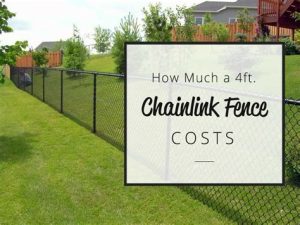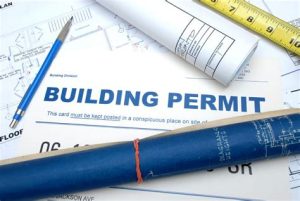Discover essential insights on fence installation, including materials, legal requirements, construction tips, and whether to choose professional help or DIY.When it comes to enhancing your property’s curb appeal and ensuring privacy, fence installation plays a pivotal role. But is this seemingly straightforward task categorized as construction? In this blog post, we’ll explore the nuances of fence installation, beginning with a clear definition and a rundown of the various fence materials available. We’ll also delve into the legalities surrounding installation, discussing necessary permits and regulations that homeowners must consider. Furthermore, we’ll highlight crucial construction factors that can influence the success of your project. Finally, we’ll weigh the pros and cons of hiring a professional versus embarking on a DIY adventure. Whether you’re contemplating a new fence or simply curious about the process, this comprehensive guide will equip you with the essential knowledge you need.
Defining Fence Installation
Fence installation refers to the process of constructing a barrier around a property or designated area using various materials and techniques. This task is essential for providing security, privacy, and aesthetic appeal to residential and commercial properties alike. The installation of a fence typically involves several stages, including planning, material selection, excavation, and assembly.
During the fence installation process, it is crucial to consider factors such as local regulations, property lines, and the intended purpose of the fence. For example, some people install fences primarily for privacy, while others prioritize security or pet containment. The choice of materials—such as wood, vinyl, chain link, or metal—also plays a significant role in the overall function and look of the fence.
Moreover, proper fence installation requires knowledge of tools and techniques that ensure durability and compliance with building codes. Whether you opt for a professional installation or decide to take on the project yourself, understanding the fundamental aspects of fence installation will help ensure that the final outcome meets your expectations.
Types of Fence Materials
When considering fence installation, one of the most important decisions is selecting the right fence material. The type of material not only affects the overall appearance of your property but also impacts its durability, maintenance, and cost.
| Material | Pros | Cons |
|---|---|---|
| Wood | Natural appearance, easy to customize, good insulation. | Requires regular maintenance, susceptible to rot and pests. |
| Vinyl | Low maintenance, durable, available in various colors. | Higher initial cost, can become brittle over time. |
| Chain Link | Cost-effective, durable, provides visibility. | Limited privacy, less attractive than other options. |
| Aluminum | Rust-resistant, low maintenance, elegant appearance. | More expensive than chain link, less privacy unless combined with other materials. |
| Composite | Eco-friendly, low maintenance, available in various styles. | Higher cost, can fade over time. |
Choosing the right fence material largely depends on your specific needs and preferences. For instance, if aesthetic appeal is important, wood or composite materials might be suitable. Conversely, if you’re looking for something cost-effective and durable, chain link or vinyl could be the way to go.
Moreover, consider the local climate and environmental conditions. Some materials withstand various weather elements better than others, impacting their longevity and performance. Always factor in local regulations and homeowner association guidelines when deciding on a fence material to ensure compliance.
Overall, understanding the various types of fence materials will empower you to make an informed choice during your fence installation process. Whether you prioritize durability, maintenance, or aesthetics, there’s a perfect solution for your fencing needs!
Legal Requirements for Installation
When planning a fence installation, understanding the legal requirements is crucial to avoid any potential issues down the line. Different regions and municipalities have specific regulations regarding fence height, placement, and permitted materials. Researching these requirements before breaking ground will ensure your project complies with local laws.
One of the first steps in the legal compliance process is to check with your local zoning office or building department. They can provide you with information about necessary permits, building codes, and any specific restrictions that may apply to your property. It is also wise to review your property lines to avoid disputes with neighbors or encroaching on their space.
In some areas, homeowners associations (HOAs) also have their own guidelines on fence types, colors, and installation methods. Failing to adhere to these regulations could lead to fines or the requirement to remove the fence altogether. Therefore, it is essential to understand both local laws and HOA rules to ensure a smooth installation process.
Construction Considerations for Fence Installation
When it comes to fence installation, there are several critical construction considerations that you must keep in mind to ensure a successful project. This includes evaluating the terrain, understanding your local zoning laws, and selecting the right fencing materials. Here, we break down some of the key aspects to consider during the installation process.
1. Assessing the Terrain:
The type of soil and landscape in your yard can significantly impact the type of fence you choose and how it should be installed. For example, rocky or uneven terrain may require additional support structures or a different approach to securing the fence posts.
2. Local Regulations:
Before you start digging, it’s essential to check your local building codes and regulations. Many jurisdictions have specific rules about the height and type of fences that are permissible. Some might even require a permit for installation, so staying informed is crucial.
3. Utility Markings:
Before digging any post holes, always call your local utility companies to mark underground lines. This precaution can prevent accidents and ensure that you don’t damage any vital infrastructure, which could lead to costly repairs.
4. Choosing the Right Materials:
The durability and appearance of your fence largely depend on the materials you select. Options range from wood and vinyl to chain-link and wrought iron, each with unique benefits and drawbacks. Consider your budget and the aesthetic you want to achieve.
Professional vs. DIY Installation
When it comes to fence installation, homeowners often find themselves debating between opting for a professional installation or taking on the project as a DIY endeavor. Both options have distinct advantages and disadvantages that can significantly impact the final result, not to mention the investment of time and resources.
Hiring a professional for your fence installation guarantees expertise and efficiency. Professionals bring years of experience to the table, ensuring that the installation meets local building codes and standards.
- Quality Workmanship: Pros are trained to handle various materials and challenging terrains.
- Time-Saving: Professionals can often complete a project in a fraction of the time it would take an amateur.
- Warranty & Support: Many professionals offer warranties on their work, giving you peace of mind.
On the other hand, a DIY installation can be an appealing choice for homeowners who enjoy hands-on projects and want to save on labor costs. However, it requires careful planning and diligent effort.
- Cost-Effective: You save money on labor expenses, but you will need to invest in tools and potentially rentals.
- Personal Satisfaction: Completing a project on your own can be immensely rewarding.
- Learning Experience: DIY installations allow you to gain new skills and knowledge about home improvement.
Ultimately, the choice between professional and DIY installation depends on your budget, skills, and how much time you are willing to commit. Assessing your needs and researching the pros and cons of each option will help you make an informed decision that aligns with your project’s goals.
Frequently Asked Questions
Is fence installation categorized as a construction project?
Yes, fence installation is typically categorized as a construction project since it involves the building of structures on a property.
What are some common types of fences that can be installed?
Common types of fences include wood, vinyl, chain-link, aluminum, and wrought iron.
Do you need a permit for fence installation?
Yes, depending on local regulations, you may need a permit for installation, especially if the fence will exceed a certain height.
How long does it typically take to install a fence?
The duration of fence installation can vary, but it generally takes a few days to a week, depending on the size of the area and the type of fence.
What factors should be considered before installing a fence?
Factors to consider include the purpose of the fence, local zoning laws, property lines, materials, budget, and maintenance requirements.
Can I install a fence myself, or should I hire a professional?
You can install a fence yourself if you have the necessary tools and skills; however, hiring a professional is recommended for larger projects or to ensure compliance with local codes.
How does fence installation affect property value?
A well-installed and aesthetically pleasing fence can enhance property value, while a poorly constructed fence can detract from it.





